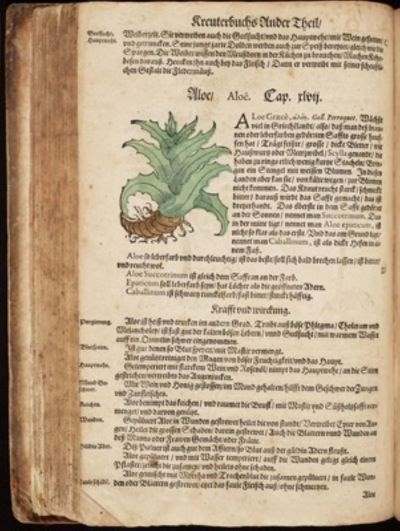Aloe
Aloe spp.

芦荟 (lú huì, Mandarin), अगरू (agaroo, Hindi), કુંવાર (kunvāra, Gujarati), dacar cas (Somali), sábila (Swahili), رتابن ابن nabat alsabar, Arabic)
Aloe is an ancient plant with a wide variety of medicinal and culinary uses today. Originally from Africa, aloe was used as a medicine in many ancient civilizations such as Egypt, Greece and Rome. Native to Africa, the Spanish brought it to the Americas in the 16th century. Today it remains a popular ingredient in lotions and beverages throughout the world. Since it thrives in hot and dry climates, it is a common plant found in food gardens, landscapes and homes throughout Florida.

Aloe is native to Africa and the Middle East. The genus includes more than 650 species, and Aloe vera is most widely used for pharmaceutical purposes with the earliest record of cultivation dating to ancient Egypt. The medicinal plant has been used for millennia across several cultures throughout the Mediterranean, Africa, the Middle East and Asia. Spanish Jesuit priests brought Aloe vera to the Americas, including Florida, during the 16th century. Aloe is not only a popular medicine in a wide range of lotions throughout the world, it is also consumed in beverages and tonics in tropical regions such as Mexico.
Ancient Egyptians referred to aloe as “the plant of immortality,” and it was considered a panacea, or ‘cure for all ailments,’ in ancient Greece and used for wound care in Rome. Aloe is mentioned in the Bible at least five times as a preservative and perfume; ‘Like aloes planted by the Lord,’ (Number 24:6), ‘All Your garments are fragrant with myrrh and aloes and cassia,’ (Psalm 45:8), ‘Myrrh and aloes, along with all the finest spices,’ (Song of Solomon 4:15),’I have sprinkled my bed With myrrh, aloes and cinnamon,’ (Proverbs 7:17),and ‘bringing a mixture of myrrh and aloes, about a hundred pounds weight,’ (John 19:39). In the United States, aloe was initially used as a laxative in the 19th century, and it became popular for skin conditions such as burns. By the 20th century aloe became a popular ingredient in beverages throughout Central America and Asia, and immigrants to Florida have contributed to the growing popularity of flavored aloe drinks throughout the state.


Aloe juice is a nutritious and thirst-quenching addition to beverages, and tender shoots are an excellent addition to salads.
Aloe is rich in vitamins (A, C, E, B12, folic acid, choline), minerals (calcium, chromium, copper, selenium, manganese, magnesium, potassium, sodium, and zinc), enzymes, sugars, lignin, saponins, salicylic and amino acids.


Aloe can be grown indoors or outdoors. It is a clumping plant and will need room to expand either in a pot, garden or landscape. Aloe needs well-drained soil, and it can thrive in hot dry weather. Aloe produces small offshoots called “pups” that can be separated and planted year round. The aloe leaves can be harvested year-round. To Plan a heritage garden, download the ‘Planning a Florida Heritage Garden (PDF).’

Santa Fe College Partnered with Multiple Organizations in a Collaborative Effort to Bring Awareness of the Heritage Plants In Florida.
BY CULTURAL HISTORY
BY GROWING SEASON
DROUGHT TOLERANT PLANTS
Commitment to Equal Access and Equal Opportunity
Santa Fe College is committed to an environment that embraces diversity, respects the rights of all individuals, is open and accessible, and is free of harassment and discrimination. For more information, visit sfcollege.edu/eaeo or contact equity.officer@sfcollege.edu.
SACSCOC Accreditation Statement
Santa Fe College is accredited by the Southern Association of Colleges and Schools Commission on Colleges (SACSCOC). For more information, visit sfcollege.edu/sacscoc.
